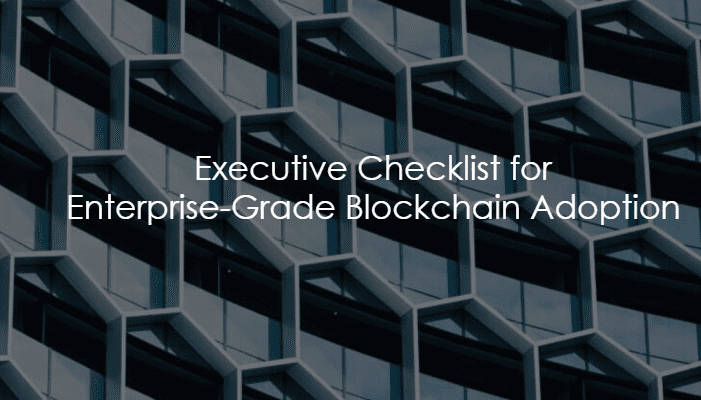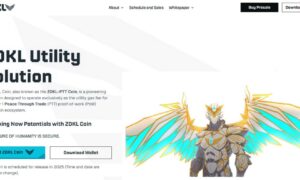As we started into 2019, there was a lot of doubt as to whether blockchain technology could live up to expectations. According to Deloitte, 39% of companies worldwide believed it was overhyped—was it really the securest method out there? Was it truly a practical solution for enterprises? Or just another bit of expensive ‘need-to-have’ kit that would soon fall out of fashion?
Despite the potentials of the technology, many were concerned by factors such as regulatory uncertainty, trust issues, poor scalability, compliance, and more; and these are just the tip of the iceberg.
With such genuine worries surrounding the technology, it might seem a wonder why any company would take on such a risk. Yet, despite rumblings, many businesses have continued to show support. In a PwC survey, 84% of respondents quoted that they are currently in the active stage of blockchain development, and multinational giants such as Microsoft, Salesforce, and Oracle have got in on the game and committed to the trend with their own blockchain initiatives.
The most recent supporter is Facebook, whose June 2019 announcement of the platform’s cryptocurrency, Libra, changed the doubtful dialogue on blockchain from one of ambiguity to renewed hope.
Whether or not to enter the blockchain arena is one of the concerns puzzling executives this year. As preparation is the key to success, we composed this checklist to help companies decide if their business is blockchain-prepped.
Blockchain Readiness Checklist for Enterprises
1) You’re confident your enterprise needs blockchain for its future development
Ask yourself: does your business really need blockchain, or are you just jumping on the bandwagon? Blockchain arrived on the scene just 11 years ago in 2008, and since then has gained tremendous momentum as a market-changer. Early adopters have seen great potential but also immense challenges, such as the rise-fall-rise journey of Bitcoin. Its popularity has even prompted governments to adopt blockchain, such as Finland’s e-government experiment with Essentia. But before rushing to join the crowd, we advise businesses to listen to a little old-time management advice: “don’t just do something, stand there.”
The bandwagon effect is a cognitive bias that leads people to join in with the trend because others are doing it. Think it’s impossible in 2019? Just consider the recent history of the “Dotcom” bubble that saw businesses go from boom to bust in the blink of an eye. The winners (Google, for example) were those businesses who took a step back from the “Dotcom” hype and looked to the future potential of the technology.
2) You’ve done your research
Sounds elementary, right? This checkbox isn’t ground-breaking yet is frequently overlooked. Before diving into the blockchain world, it’s vital for any company to step back and consider what blockchain is all about and precisely how it will fit into their business model.
Successful blockchain solutions are those that seamlessly integrate into an overall business strategy and aren’t an afterthought. It’s recommended to do your research and learn the ins and outs of blockchain, from the architecture of a distributed ledger to the best-fitting consensus algorithm and user rights.
While researching, you can be better prepared to adapt and integrate with lower business risk. Blockchain is new to the market, but that doesn’t mean there isn’t vital information out there. Look at others’ failures and learn from them to boost your success potential.
While we recommend tying blockchain directly to your business needs, do err on the side of caution and avoid revolving your entire business around the technology right away. Instead, find a solid use case instead of applying it all over the place.
3) You know precisely what your blockchain will look like
Now that you have a general idea on why you need blockchain and if it’s suitable, it’s time to talk specifics and how your blockchain will work in practice.
When devising your strategy, you’ll need to consider if your blockchain will be permissioned (private) or permissionless (public). This will define who will have access to your blockchain. Permissionless networks are essentially open for anyone to join, and there is little control over it on the part of the developer. Meanwhile, permissioned networks only allow users with special access rights, making it a closed ecosystem.
Next, you’ll need to decide how you want your platform to be built. Do you plan on using existing platforms, such as EOS.IO, Corda or Hyperledger, or instead want to start from scratch in designing your own? Each option has its pros and cons, but the decision will be largely based on your needs and available budget.
Finally, how much do you need your blockchain to scale? Having a general idea of how big your ecosystem should be will allow you to build a more suitable system at the outset instead of later trying to expand. Conversely, you can also avoid creating an unnecessarily large system that only consumes resources.
4) You know how to develop and manage your blockchain
How are you going to complete the task ahead?
Businesses entering the blockchain game for the first time are often faced with the dilemma of how to approach a blockchain project. Generally, this comes down to choosing in-house specialists or blockchain consultants.
While hiring in-house specialists might seem like an immediate solution in terms of involved costs and control, on the other hand, such specialists are in demand and come at a price. Computer World estimated a blockchain specialist’s salary at around $150,000+ per year, and this route will likely require additional staffing resources to support these professionals’ work.
Outsourcing the project means you get the required experience, knowledge, and access to a wide variety of specialists with none of the challenges that come with a salaried position. Besides, you’ll pay only for the work completed, which may reduce overall costs. However, those who choose this route should be aware of ongoing expenses, such as maintenance, and the need for internal staff training to adapt effectively to using blockchain.
Both choices have pros and cons; each business needs to evaluate their individual needs and decide on a better fit.
5) You’ve identified all the costs involved
Are you ready for the costs? Just because blockchain is distributed doesn’t mean it’s free; in fact, it can be a pretty costly investment for any business.
Generally, this involves considering two factors—total cost of ownership (TCO) and return on investment (ROI). TCO encompasses all the expenses your business will incur from initial development to deployment, and maintenance costs, while ROI is the amount of profit you can expect from your investment. The end costs, though, will largely depend on your business and proposed solution.
Before engaging blockchain technology, you need to calculate the value-cost dynamics and draw your conclusion on whether blockchain is an affordable solution, and whether it presents significant benefits over less-costly options.
The Wrap-up
Despite the challenges facing enterprises adopting blockchain solutions, we are continuing to see the impact of this technology in new and surprising ways, away from its traditional cryptocurrency uses.
Our prediction is that although blockchain may not be living up to its “revolutionary” expectations at the moment, realizing its potential fully is a matter of time. So, if you’re an enterprise seeking to onboard a blockchain, there’s no better time than the present to get going.


































